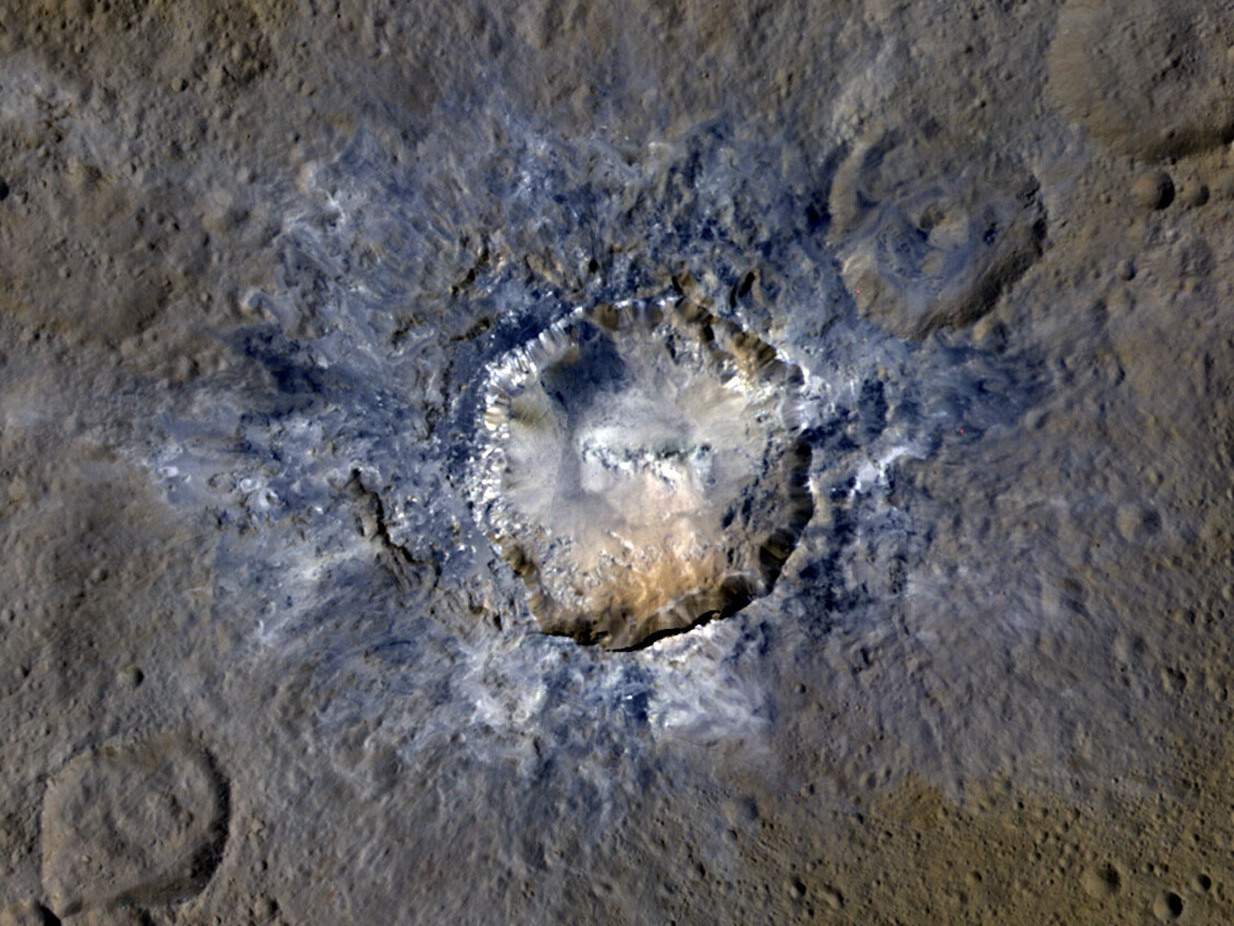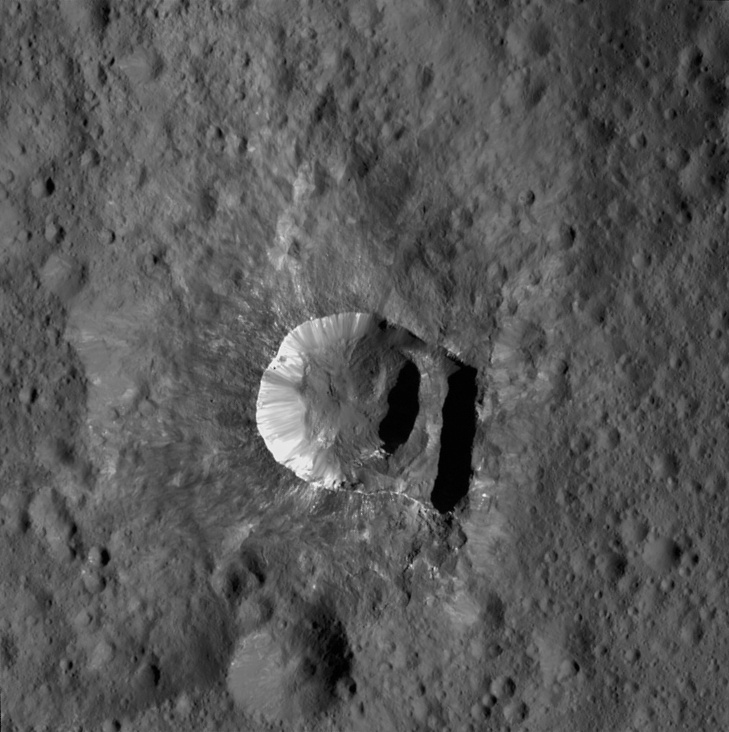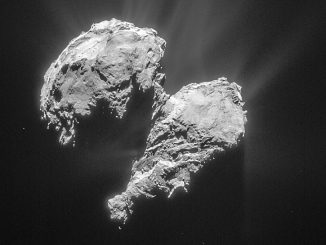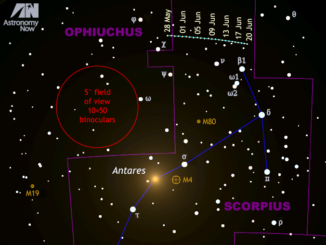
In its lowest-altitude mapping orbit, at a distance of 240 miles (385 kilometres) from Ceres, Dawn has provided scientists with spectacular views of the dwarf planet.
Haulani Crater, with a diameter of 21 miles (34 kilometres), shows evidence of landslides from its crater rim. Smooth material and a central ridge stand out on its floor. An enhanced false-colour view allows scientists to gain insight into materials and how they relate to surface morphology. This image shows rays of bluish ejected material. The colour blue in such views has been associated with young features on Ceres.
“Haulani perfectly displays the properties we would expect from a fresh impact into the surface of Ceres. The crater floor is largely free of impacts, and it contrasts sharply in colour from older parts of the surface,” said Martin Hoffmann, co-investigator on the Dawn framing camera team, based at the Max Planck Institute for Solar System Research, Göttingen, Germany.
The crater’s polygonal nature (meaning it resembles a shape made of straight lines) is noteworthy because most craters seen on other planetary bodies, including Earth, are nearly circular. The straight edges of some Cerean craters, including Haulani, result from pre-existing stress patterns and faults beneath the surface.
“Little Oxo may be poised to make a big contribution to understanding the upper crust of Ceres,” said Chris Russell, principal investigator of the mission, based at the University of California, Los Angeles.



